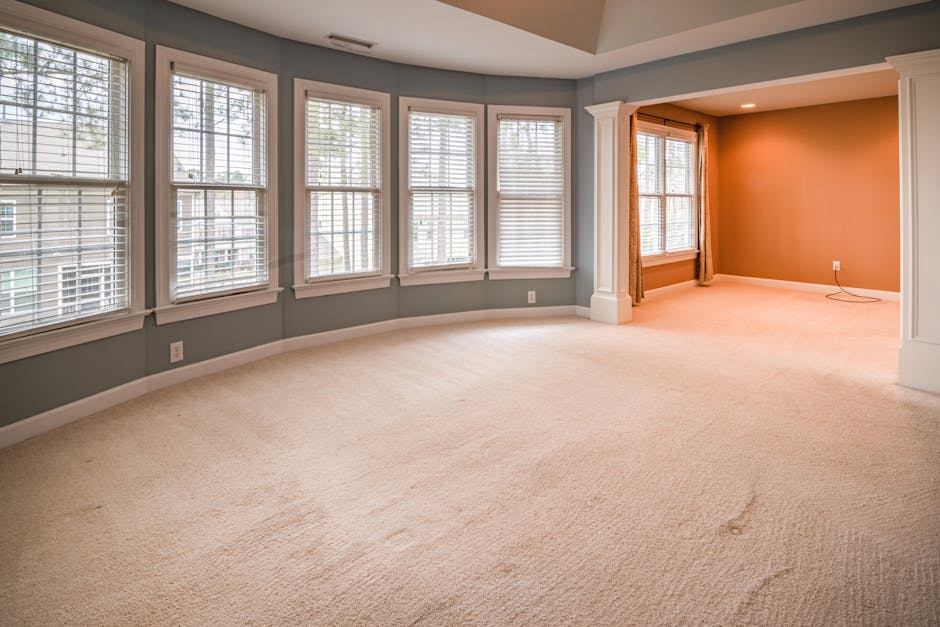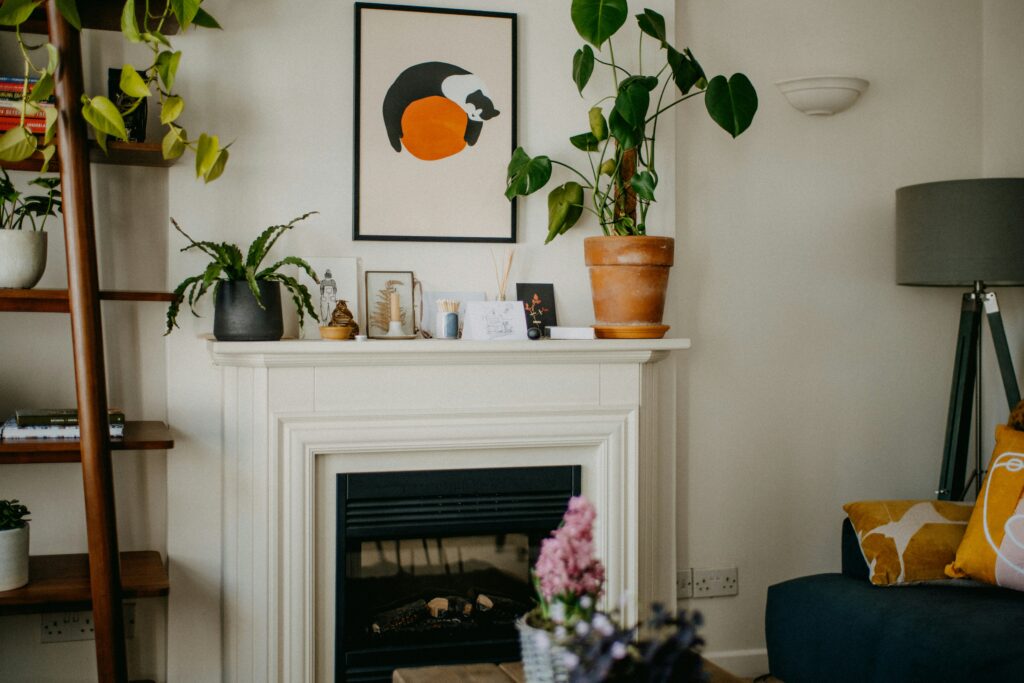Focus on High-Impact Rooms First
When staging a home, not all rooms are created equal. If you’re working with a limited budget or timeline, it’s crucial to prioritize the spaces that make the biggest impression on buyers.
The Three Power Rooms
These rooms carry the most emotional and functional weight during showings:
-
Living Room
-
Often the first space buyers see and envision themselves living in
-
Prioritize a clean layout, neutral tones, and cozy-but-minimal furnishings
-
Primary Bedroom
-
Helps buyers imagine comfort and retreat
-
Keep it simple, calm, and clutter-free to maximize space and serenity
-
Kitchen
-
One of the most decisive spaces in the home-buying process
-
Ensure countertops are clear, lighting is bright, and small decorative touches (like a bowl of fruit or fresh towels) add charm without clutter
Smart Staging on a Limited Budget
Staging doesn’t have to be expensive to be effective. Here’s how to make the most of your resources:
- Declutter first: The biggest impact often comes from simply removing visual noise
- Use what you have: Rearranging furniture, updating linens, and adding a few strategic props can do wonders
- Rent or buy secondhand: For missing pieces, check local rental offices or upscale secondhand furnishings
- Stick to a cohesive color palette: This helps buyers visually connect the home, even on a budget
For more room-specific staging tips, check out our Room-by-Room Staging Guide.
Bottom Line
If you can only stage a few spaces, start with the living room, primary bedroom, and kitchen. These areas influence buyer perception the most and help them emotionally connect with the home.
Designing with Purpose: From Confusion to Clarity
Open spaces can be inviting, but they often leave guests (and even residents) wondering: what is this space supposed to be? In 2024, smart vlogging backdrops and lifestyle-focused content are emphasizing purposeful design—making every room immediately identifiable and intention-driven.
Define the Function, Not Just the Aesthetic
Don’t let ambiguity dominate your layout. Whether you’re filming a vlog or just refreshing your home, clearly defined spaces invite connection and reduce visual noise.
- Instead of a chair and desk randomly placed, make it obvious: this is a home office.
- Add visual anchors like bookshelves, rugs, or lighting to communicate a room’s usage.
- Incorporate subtle but consistent styling cues that support the function—stationery and tech accessories for a workspace, soft throws and side tables for a reading nook.
Floating Furniture in Open-Concept Layouts
In spacious or open-concept homes, furniture no longer needs to hug the walls. Floating layouts are making a major comeback—especially in content-friendly designs.
- Use furniture to carve out smaller moments within a larger space.
- Anchor a seating arrangement with a rug to form a social zone.
- Balance the layout with symmetry even when furniture doesn’t touch any walls.
This approach not only improves traffic flow but also creates layered compositions that look polished on camera.
Creating Visual and Functional Zones
Large empty rooms can feel disconnected or underused without clear spatial cues. Avoid that “furniture showroom” vibe by creating multiple functional zones that work together harmoniously.
- Combine a lounge area, workspace, and reading nook within one large room.
- Vary heights and textures to visually separate one zone from another.
- Lighting helps guide the eye—task lighting for productivity zones, ambient lighting for relaxation areas.
Each zone tells its own story, while contributing to the overall narrative of the space—a win for both design and content creation.
Walk into an empty house, and you’re not just looking at bare walls—you’re confronting a question mark. For buyers, an unfurnished space can feel cold, uncertain, even overwhelming. It’s hard to imagine life within hollow rooms. That lack of emotional connection slows down decisions. Buyers don’t dream in blueprints—they dream in furniture, cozy lighting, and dinner table conversations.
And the numbers back it up. According to the Real Estate Staging Association, staged homes sell 73% faster than their non-staged counterparts. On average, they go for 5–10% more, too. In markets where timing and margins matter, that’s not pocket change.
Why? First impressions. Most buyers decide how they feel about a property within the first 30 seconds. A staged home does more than look good—it helps buyers picture their lives there. It makes the possibility real, not theoretical. Meanwhile, an empty room is just that: empty.
Minimalism isn’t just a lifestyle trend anymore—it’s becoming a smart move for vloggers, especially in a crowded, fast-paced content space. Gear, clothes, props—too much stuff clutters your workflow and your visuals. The solution? Rent what you need, skip what you don’t. Camera upgrades for a specific shoot? Rent. Need a unique outfit for a vlog collab? Rent that too. It’s cheaper, cleaner, and keeps your space (and head) clear.
When buying, focus on versatile, neutral pieces. Think solid colors, classic cuts, gear that fits multiple settings. These staples adapt easily to different formats, locations, and edit styles. One jacket, five shoots. One light kit, endless reuse. You’re building a toolkit, not a closet.
Avoid clutter at all costs. A tight frame looks better. A tidy workspace edits faster. In vlogging, less isn’t just more—it’s a creative advantage.
Lighting isn’t just functional—it sets the tone. Natural light always wins, so film near windows when you can. When that’s not enough, go for warm, soft bulbs and floor lamps. Harsh overhead lights flatter no one.
Accessories do a lot with very little. A small stack of books, a plant in the corner, or a textured throw can make a space look styled without trying too hard. Mirrors bounce light and make a room feel bigger. You don’t need to spend much—thrift stores and budget shops have plenty.
What you want to avoid? The staged-to-death look. Over-designed rooms scream inauthentic and viewers—especially buyers—can tell when it’s all props and no soul. Keep it clean, believable, and personable. That sells better than anything.
When you strip a space down—furniture gone, appliances out—you’re left with nowhere to hide. Every scuff, streak, and scratch becomes a headline. Bare walls, empty floors, and untouched corners don’t lie, especially when you’re filming or preparing a space for high visual impact. Vloggers, realtors, and renovators alike know that in minimalism, detail matters.
Start where eyes naturally fall: windows, baseboards, and flooring. Smears on glass show up glaringly on camera. Dust lines and chipped paint on trim pull focus. Stained carpets? Even worse. A quick surface swipe won’t cut it. This level of cleanliness is about making the space feel cared for, even if it’s technically empty.
And yes—smell counts. You don’t need fancy fragrances. In fact, avoid them. Clean and neutral carries better than perfumed air, especially in enclosed spaces that will appear on film or get walked by guests. Bottom line: emptiness multiplies the small stuff. Clean like someone’s going to zoom in on it. Because they probably are.
Staging to Sell, Not Just to Style
When it comes to prepping a home for sale, remember: the goal isn’t furnishing—it’s selling a vision. Home staging is about helping potential buyers visualize themselves in the space, not showing off your décor preferences.
Create a Blank Canvas with Personality
To sell effectively, your staging strategy should walk a fine line between neutral and inviting.
- Avoid bold personal style choices that might alienate buyers
- Stick to a unified, neutral color palette to appeal to a wide audience
- Add subtle touches like tasteful art or greenery for warmth
Let Buyers Picture Their Lives There
It’s not just a house—it’s where someone’s next chapter will unfold. Help them see that.
- Pull back on personal photos and hyper-specific design
- Optimize layout to show off usable space and flow
- Use light, space, and layout to convey possibility
Keep It Clean, Comfortable, and Consistent
Your space should feel livable, but not lived-in. Focus on simplicity and polish across all rooms.
- Declutter every surface and corner
- Use soft furnishings, like throw blankets or neutral rugs, to signal comfort
- Make sure the home’s style feels cohesive from room to room
By keeping your staging simple, clean, and buyer-focused, you’re not just showing a home—you’re selling a lifestyle that people can picture themselves stepping into.
More than 90% of homebuyers are seeing a place online before they ever step foot through the door. Which means your listing photos? They’re not optional. They’re the first showing.
To make them count, shoot with screens in mind. Wide angles help rooms feel open but not distorted. Use lighting that mimics natural daylight, even if you’re working with a small space or a cloudy morning. And watch your color balance—your phone might auto-correct it into something that looks sterile or off.
Also, skip the empty-room shots whenever you can. They don’t inspire. A bare room doesn’t tell a story—it just looks forgotten. Even minimal staging adds scale, texture, and warmth, giving buyers a reason to stick around instead of swiping past.
In 2024, the screen is the front door. Make sure it’s inviting.
For vloggers serious about standing out in 2024, specificity wins. Whether you’re filming room makeovers, home tours, or niche DIY tips, how you present your space counts. Smart content framing doesn’t just boost credibility—it builds trust. That’s where staging tactics come in handy. A clutter-free backdrop or well-lit setting can be the silent edge between average and binge-worthy.
If you’re diving into lifestyle or home-focused content, don’t guess your way through setup. A sharper staging strategy helps you guide the viewer’s eye, build aesthetic consistency, and reinforce your personal brand—without needing a studio budget.
For a deeper strategy breakdown: Room-by-Room Staging Guide




